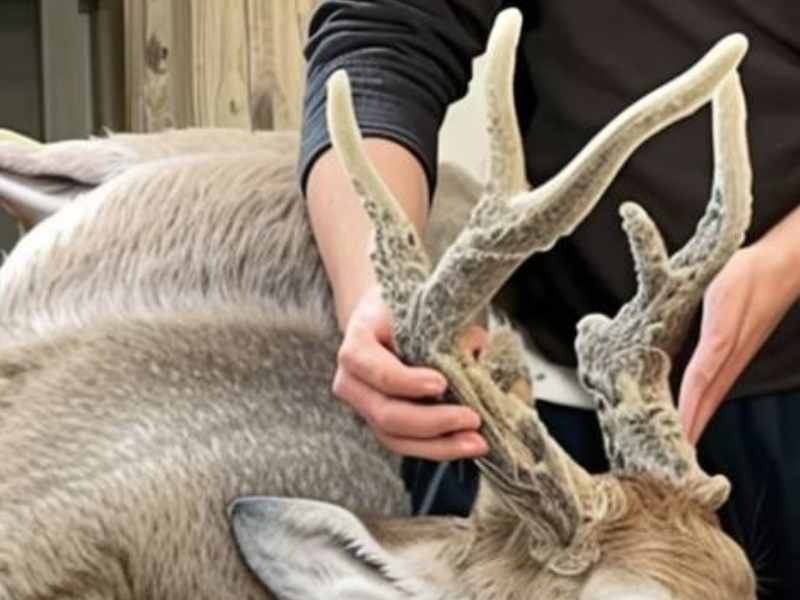Every now and then, you’ll come across a buck that just ain’t right. His antlers stay in velvet all year, he don’t scrape or rub, and when the rut rolls around, he couldn’t care less about chasing does. If you’ve ever seen one of these oddballs, you might’ve been looking at a cryptorchid buck—one of the rarest and strangest deer in the woods.
A cryptorchid buck is born with a condition called cryptorchidism, which means one or both of his testicles never dropped. Since testosterone is what makes a buck act like, well, a buck, these guys miss out on a whole lot of normal behavior. They don’t fight, don’t scrape trees, don’t rub, and don’t get fired up when the rut hits. To be honest, they act more like does than bucks, just wandering around and keeping to themselves.
But the biggest giveaway? Their antlers stay in velvet year-round and keep growing instead of shedding. Older ones can develop wild, twisted racks that earn them the nickname “cactus bucks.”
How to Spot One
If you ever run across a buck that don’t seem to follow the usual rules, here’s what to look for:
- Velvet-covered antlers, even in winter
- No signs of rut behavior—no scrapes, no rubs, no chasing does
- Calm demeanor—doesn’t fight or act aggressive
- Weird, oversized, or deformed antlers
Because of their strange behavior, some folks mistake them for antlered does. But trust me, if it’s got a big, nasty set of velvet-covered antlers and isn’t acting like a buck, odds are, you’ve found yourself a cryptorchid.

Why Does This Happen?
It’s just a random birth defect, plain and simple. Somewhere along the way, something went wrong, and their body never got the message to finish developing.
This condition isn’t genetic, so it ain’t something that gets passed down in the herd. But since cryptorchid bucks don’t produce enough testosterone, they can’t breed anyway. That means they’re just out there doing their own thing, not really affecting the deer population one way or another.
Should You Shoot One If You See It?
If you get the chance, hell yes—a cryptorchid buck is a once-in-a-lifetime deer. Not only are they rare, but their antlers make for one heck of a trophy. And since they don’t contribute to the herd, harvesting one isn’t hurting anything.
Cryptorchid bucks are one of nature’s strangest mistakes—born without the drive to fight, breed, or act like a normal buck. But that’s what makes them so fascinating. So if you ever see a velvet-racked buck in the dead of winter, start knocking on doors to get permission. You just might just get the change to hunt one of the rarest deer in the woods.
Sources and other interesting links:
https://www.charlotteobserver.com/news/local/article239005658.html
https://www.facebook.com/tnwildlife/photos/a.1429337780427145/3171535942873978/?type=3
https://bigdeerblog.com/2017/04/cryptorchidism-in-deer-stag-buck/
https://timetogowild.com/posts/whiskey-whitetails—deer-hunting-28A289C398774E3BAF2F53E7A23B639A
https://www.outdoorhub.com/news/2020/01/09/cryptorchid-buck-tennessee-hunter-shoots-whitetail-with-cryptorchidism/







Conversation | 1 comment:
We killed a buck last night and unknown to us- it was a
Cryptorchid Buck.
Central Louisiana was the location.